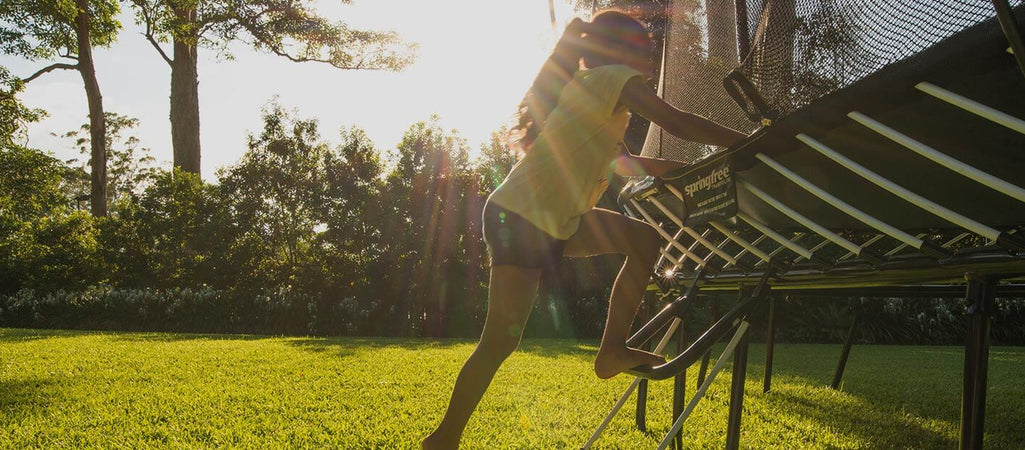Is Your Trampoline Safe? When To Say Goodbye To Your Trampoline
min read

When it comes to ‘safe trampoline play’ for our kids, you can never ask too many questions. But there is one question on many lips: is my trampoline safe?
There are a variety of factors that all contribute to a trampoline’s safety. While Springfree is the world’s safest trampoline, safety remains our number one concern.
How do you know if your trampoline is safe? Is it time to say goodbye to your trampoline in favour of a safer option?
How old is your trampoline?
Generally as a rule of thumb, the older your trampoline, the more likely that you need to replace it (or give it a safety facelift).
Kidsafe ‘Trampoline Safety Guidelines’ (June 2015) recommend that older trampolines be upgraded so that they conform to the latest voluntary Australian Standards.
Is your trampoline a quality model?
Another key rule of thumb is the quality of the trampoline. Cheap, low-quality trampolines as a rule will never last anywhere near as long as a high-quality product. The age old motto ‘you get what you pay for’ really comes into play with trampolines.
Higher quality trampolines are built durable, and will last longer (hence why they have a much longer warranty than the traditional trampoline).
The warranty period is a key indicator of the longevity of the product. The long Springfree Trampoline warranty speaks for itself and the high quality of the product.
The care and maintenance
And of course, if you take care of your trampoline, ensure one-at-a-time bouncing and regular maintenance and health checks, it will stand the test of time for much longer.
It’s also important to follow the safe use guidelines that came with the trampoline to ensure longevity.
The 5-Step Health Check
So, does your trampoline need an upgrade?
You can take a look at the overall health of your trampoline with a simple 5-Step Health Check.
Remember, always keep in mind how environmental effects like: sun, sea air, wind and rain might impact its overall condition. Like any outdoor purchase, regular maintenance, cleaning and replacement of parts when necessary, means it will age better and last longer.
1. Check the trampoline mat and net for holes or tears.
2. Make sure the springs (or the composite rods on your Springfree Trampoline) are intact, attached and secure.
3. Ensure the frame is not bent and the legs are attached properly and each sit firmly on flat ground.
4. Check any padding is attached and free of holes or cracks.
5. Inspect the frame and springs for rust, corrosion or deterioration.
If you find that any of these five steps don’t check-out, then you need to look at the possibility of either replacing parts, or if in any doubt, replace the trampoline with a new one.

